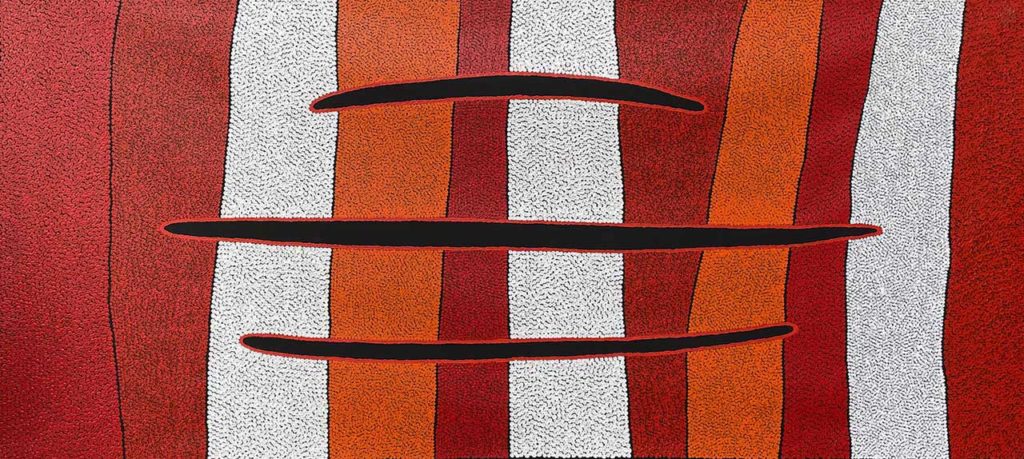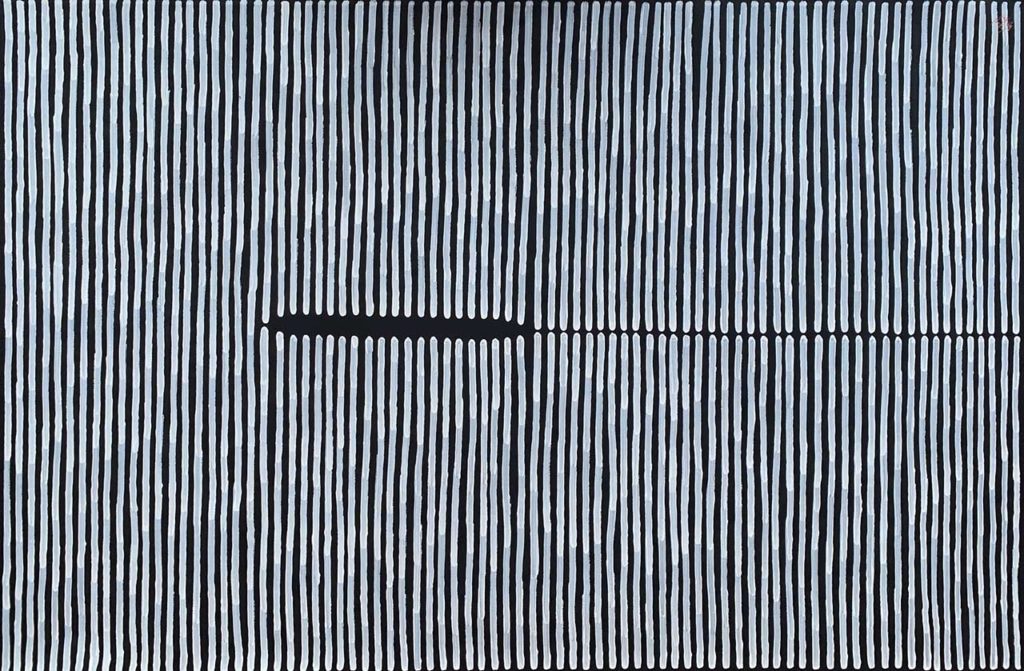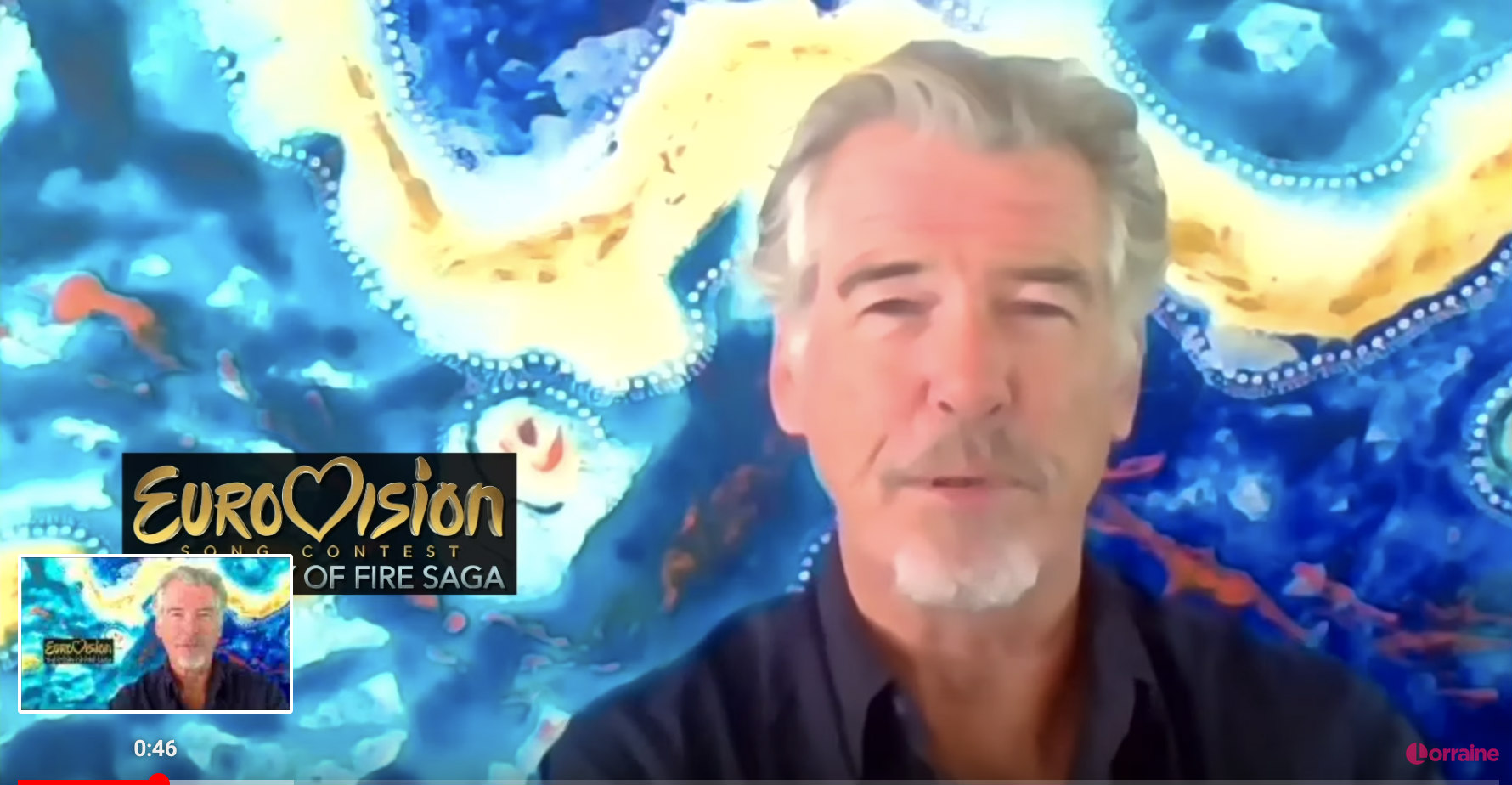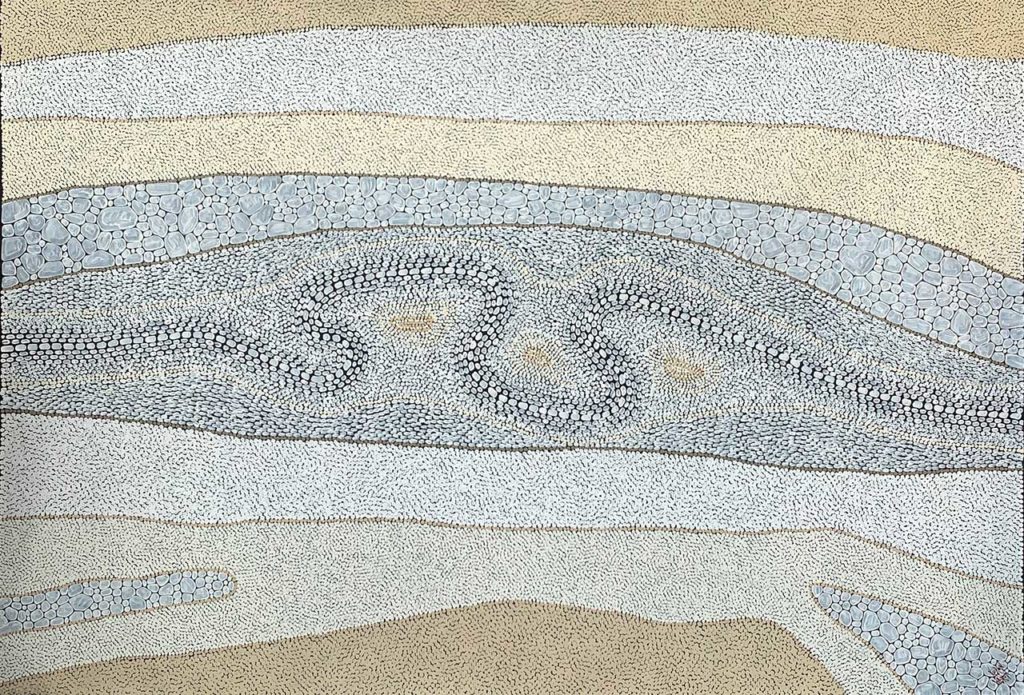Kurun Warun Painting A Moment In Time
Artist Kurun Warun travels twice a year with a school tour group to a remote region of the Northern Territory. We caught up with him near Mataranka, 420 km southeast of the territory capital Darwin at a place called Bitter Springs. The Springs are part of the Little Roper system and are home to many freshwater crocodiles.
Can you tell us about the tour?
I'm with a school group of twenty kids and twenty parents. I look after the parents when the bus comes back from dropping the kids off at Jilkminggan Aboriginal Community. Today I'll be taking the parents up to the Katherine Gorge.
How have things been for you since your last exhibition at Japingka Gallery?
I've never been busier in my life as far as art goes. It's been crazy. I've been sending art off to places like Spain and all over the place. There is so much demand. COVID seems to have boosted the art market.
Image Above: Kurun Warun | Yidarki | Jap 018185

Are there any particular stories behind your art that people enjoy?
People love the Matang Waddama story. Those picutres show the earth and the heavens. It looks like a didgeridoo is coming up. That didgeridoo is my connection with the Creator. So you got the earth down low and the heavens up above and it shows the ochre dance. So matang means ochre and warrama is dance. So ochre dance is about the dividing plains and the different lines going up represent the movement of the dance.
What sort of feedback are you getting from the international buyers?
They tell me my work appeals to them as contemporary art. They love the stories as well as the colours and the shapes.
Can you talk a bit about your colour choice?
I just choose the colours that really appeal to me. I love the structure of the colours and how that becomes part of the storytelling.
The Matang art shows the earth and the heavens, the other paintings show dry river beds and stones. They're the more in neutral tones showing the stones and the colour of the land. The Yidaki stands out as the didgeridoo in amongst other trees.
What would be your ideal lifestyle? Would you change anything?
There's nothing I'd change. Most of my time is spent painting. This tour experience really means I get paid to go on holiday with my mate who is the lead tour guide. I go and see friends down in the communities. I enjoy catching up.

Can you tell us about the Aboriginal structures that have been identified in your mother's country in Western Victoria?
My Mum used to always talk about the fish traps. I used to paint the rock fish trap. I also paint the eel story that is a story linked to a waterfall. Sometimes I paint the bigger landscapes but more often I take a tiny area and make the whole painting about that area. I paint a piece of the place. It's like pulling out a piece in the riverbed for a moment in time.
Would you say your paintings have something to say about the Indigenous culture?
My work definitely represents my own strong connection with country. I'm painting the waterholes and country on the edge of the Framlingham mission.
(Framlingham Aboriginal Station was situated beside the Hopkins River, approximately 25 kilometres from Warrnambool in Girai Wurrung country.)
Your work's been added to the art collections of some pretty famous people. Is there one in particular that you enjoyed?
Well, the Oprah story is a pretty good one. I played didgeridoo and danced at her barbecue when she was in Sydney during her visit to Australia. I spoke to her and that was fun.
I also enjoyed Pierce Brosnan buying one of my works. He featured that painting on Instagram and said kind things. During all his interviews for the film Eurovision he had my painting on the wall behind him. If you go onto YouTube there's about ten interviews with my painting in the background. He'd bought that painting when he was in Sydney shooting a James Bond film. He did call me and now he follows me on Instagram - we exchange messages from time to time. It's really nice having that sort of contact with people who enjoy my work.

Which contemporary artists do you particularly enjoy?
I like Tommy Watson's work. I love his colours. There are a lot of good artists out there. I really like the work Japingka hangs. There really is nothing else like it. I think Japingka gets the cream of the crop.
How does it feel to be out on country?
Yesterday we were in a thermal pool, 50 metres over from where we're swimming, there's a croc trap. I just love getting back on the land, getting away from the east coast, out in the bush where there's few people. I've got to go bush a couple of times a year for decent trips. It doesn't matter where it is in Australia, as long as it's out in the land. We did a nice trip, a couple months ago out to Lightning Ridge and it's just medicine for me. My wife says, "You got to go." She knows I'll be relaxed and refreshed when I come back.
Do you draw while you're out there?
Sometimes. I also take photos so I remember. My work is continually changing and evolving. I just keep rolling with it. I bring in different techniques to tell old stories in fresh ways.
What do you think people will see in this latest exhibition of yours?
I think they'll notice that it's really the kind of art that appeals to everyone. People who don't even like Aboriginal art, say to me, "This sort of art isn't usually my gig but I love this." They just love the design and the lines and the simplicity.
When people see something simple that speaks to them they are often very moved. It's nice, they want to hug me. Sometimes I reflect on the irony of growing up with kids throwing stones at me. Now I paint stones and those pictures build connection and speak to sorts of people.

